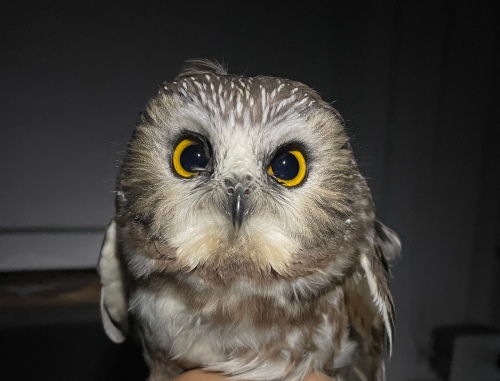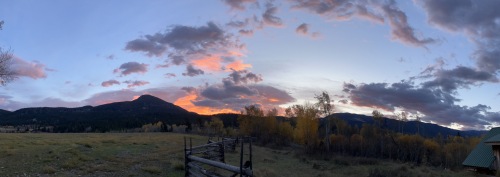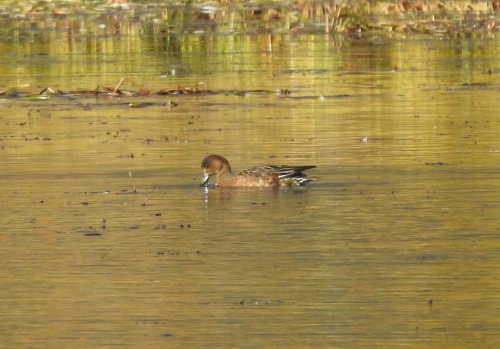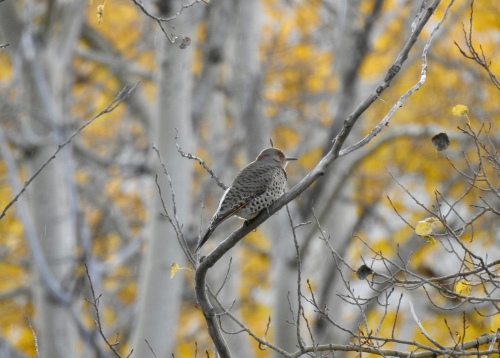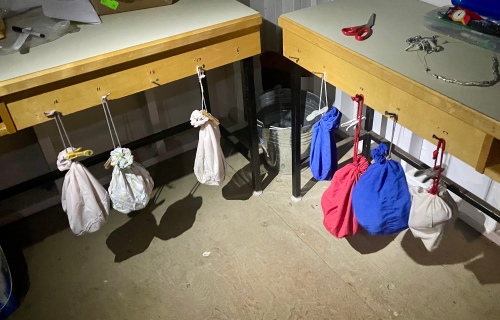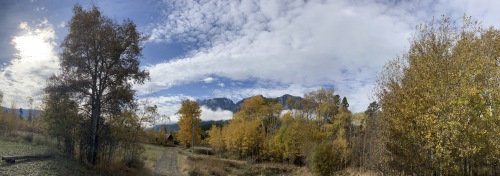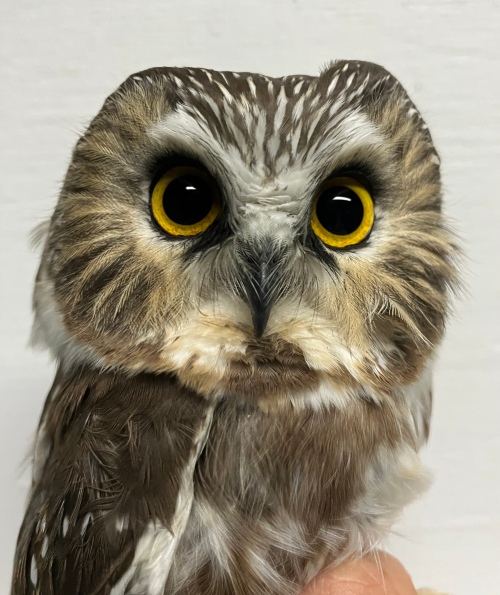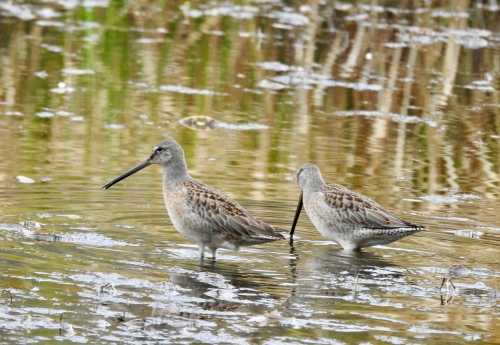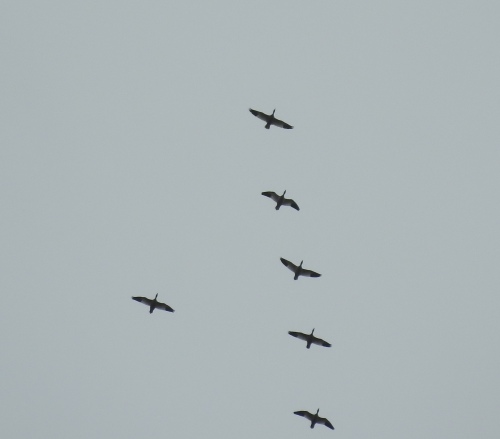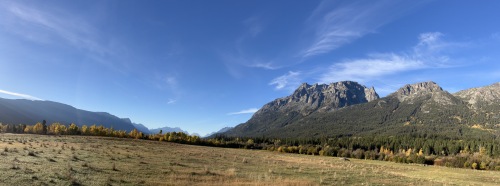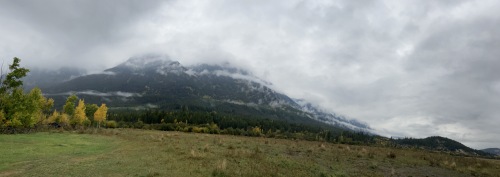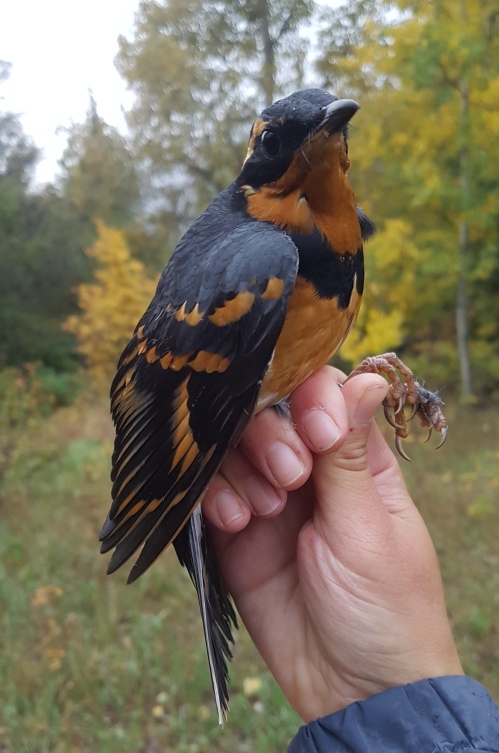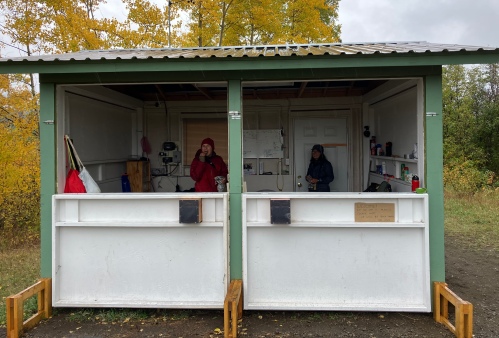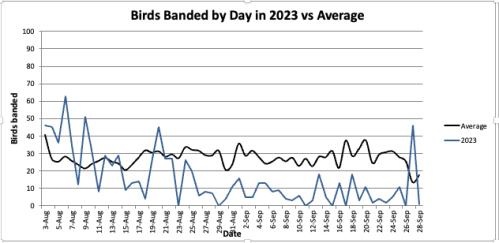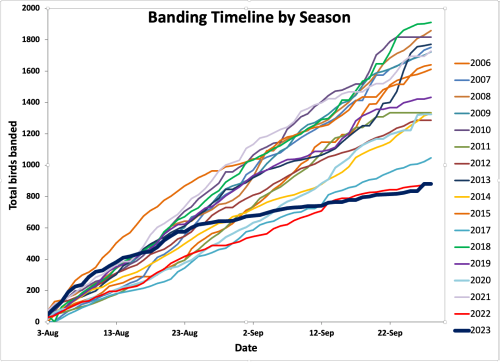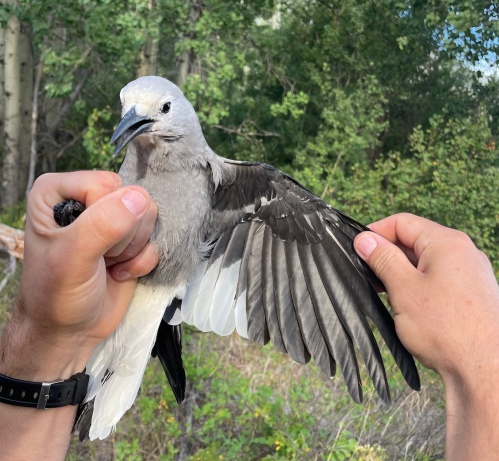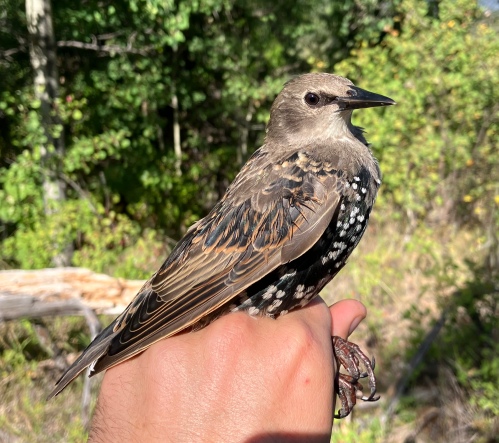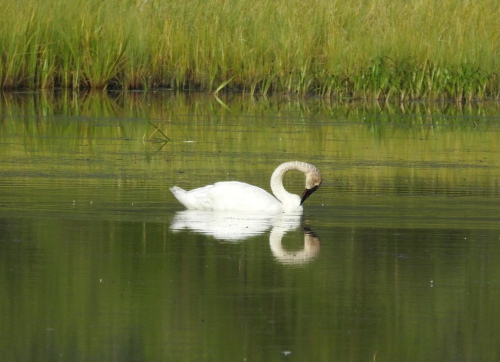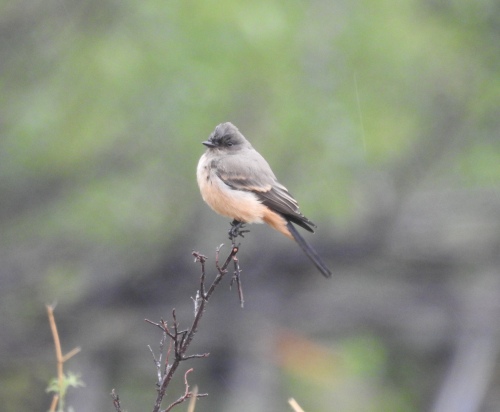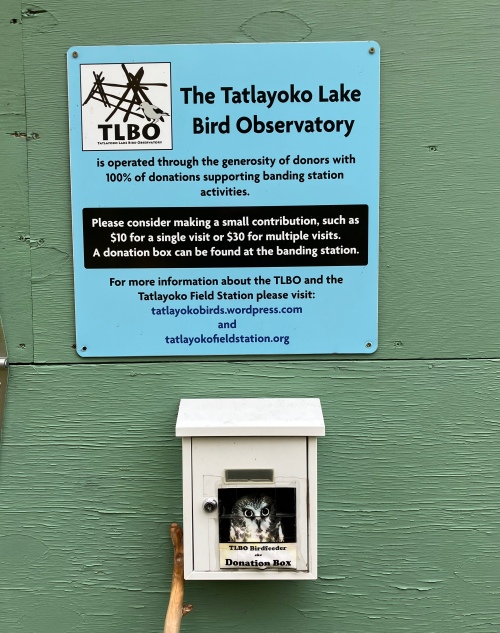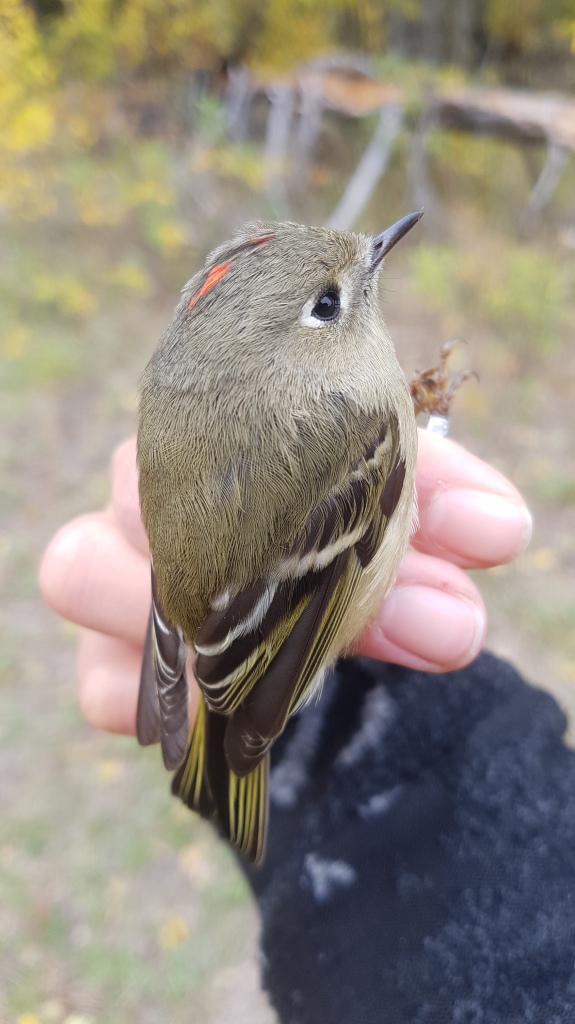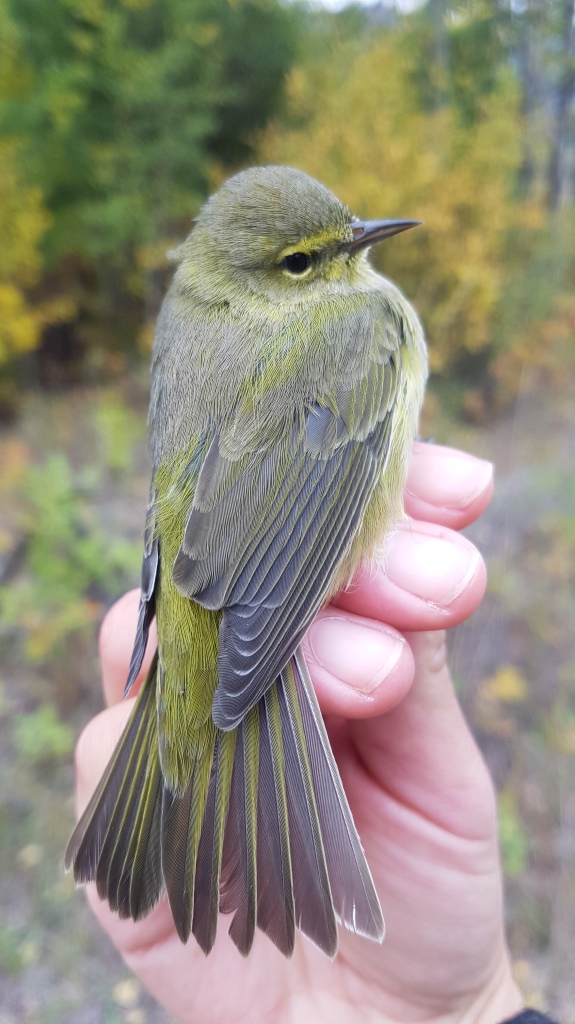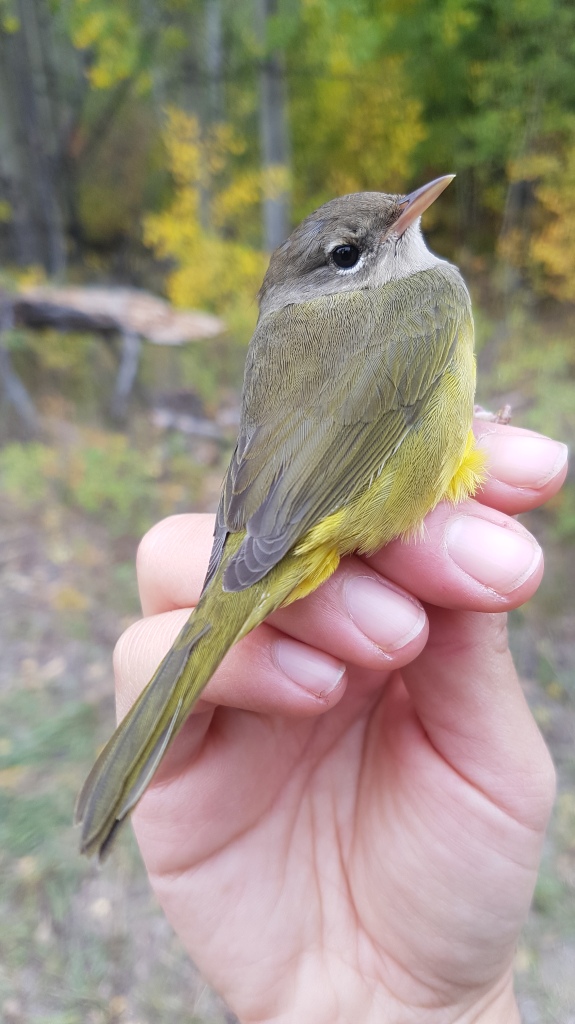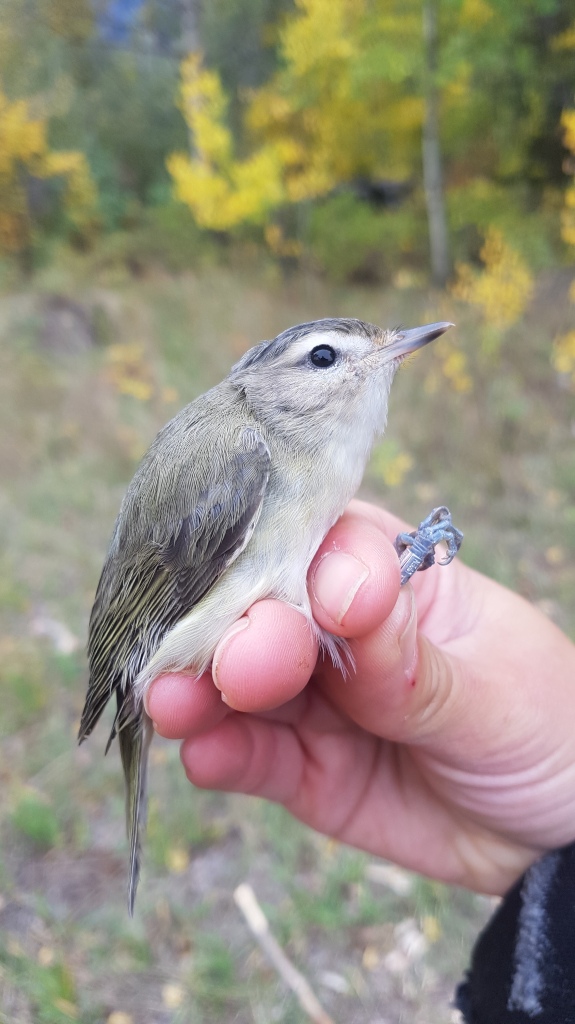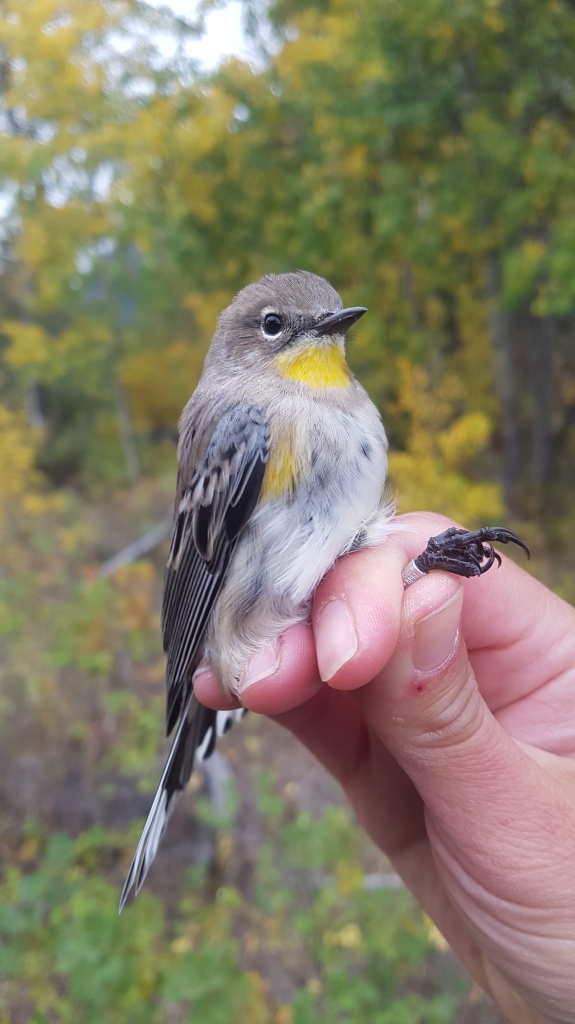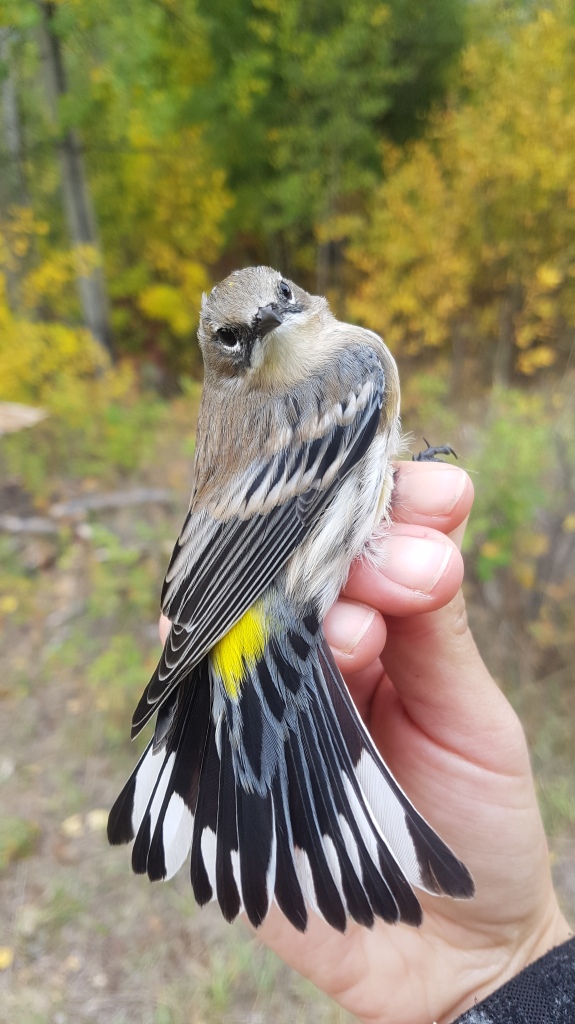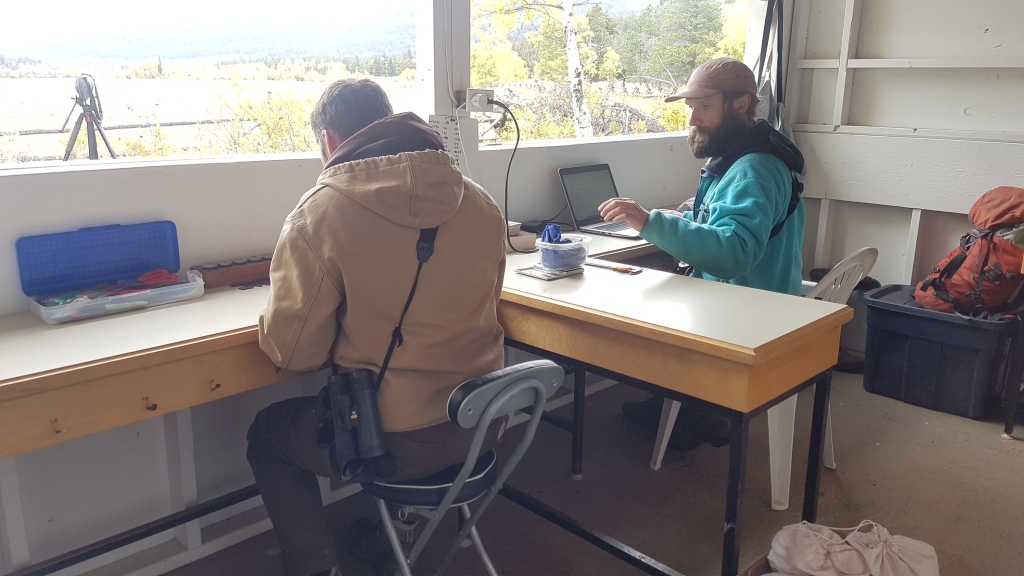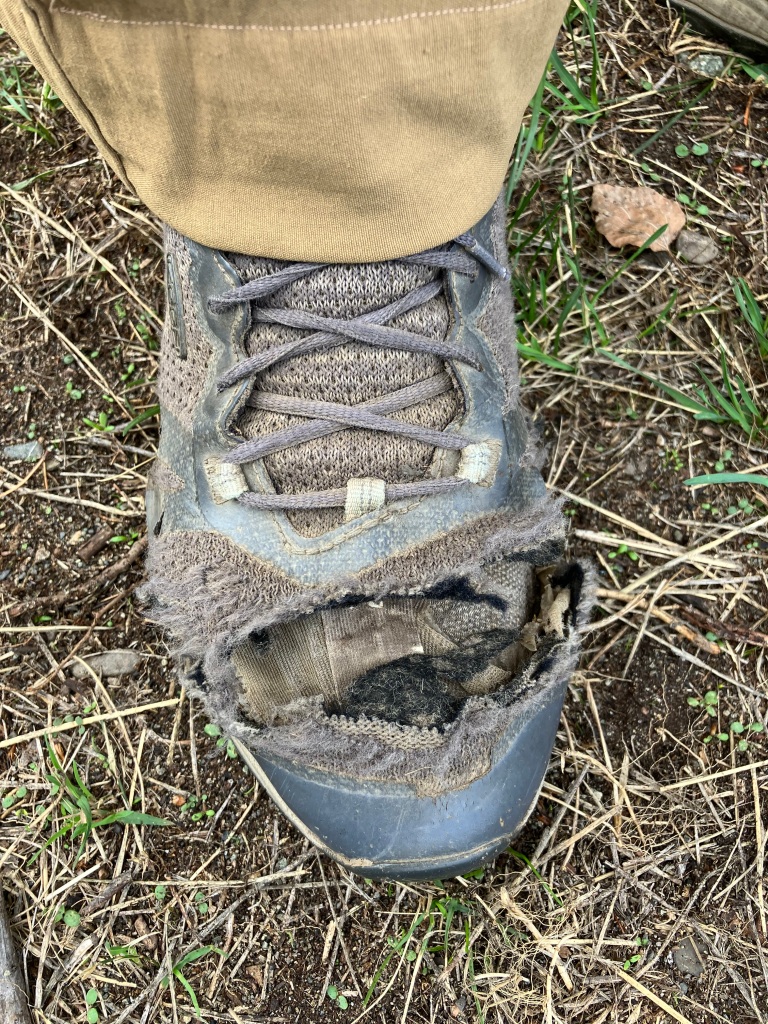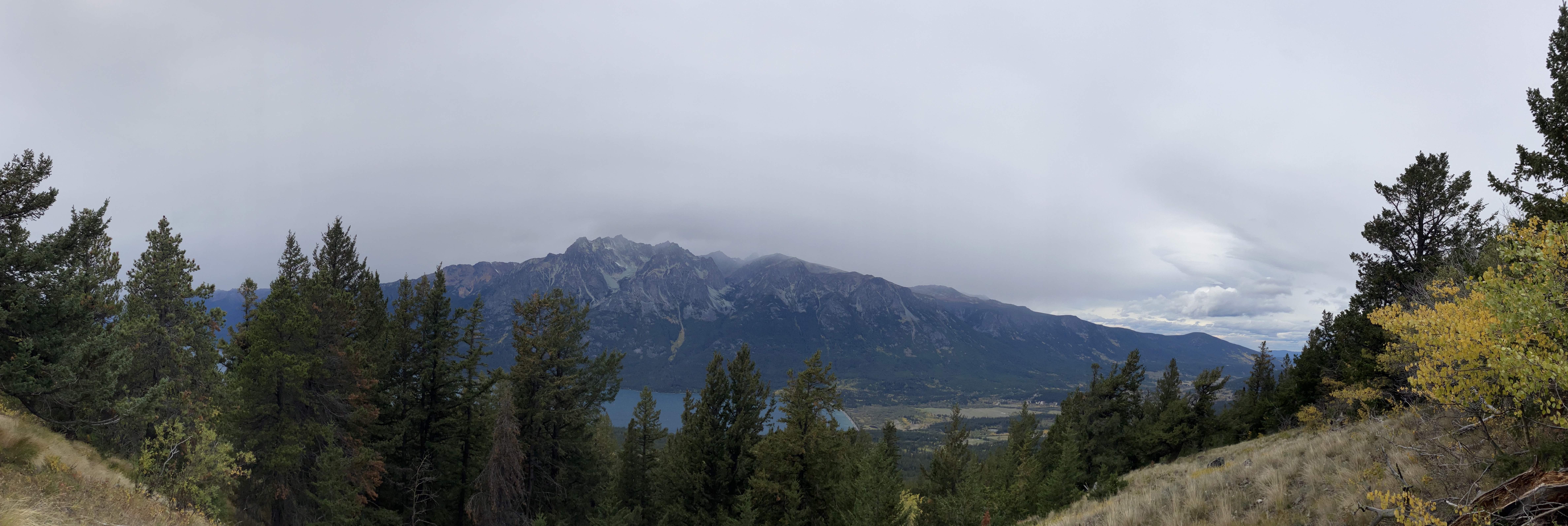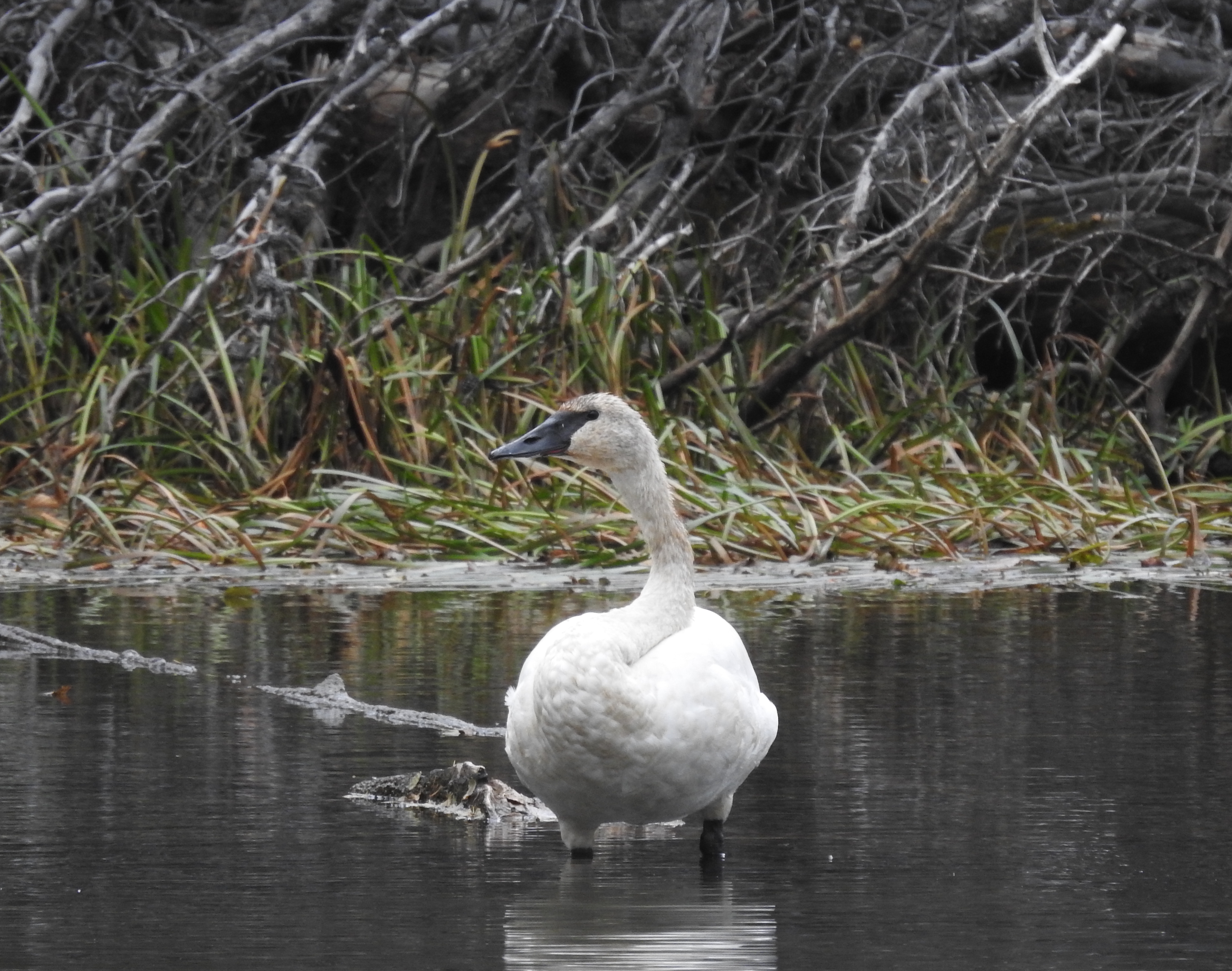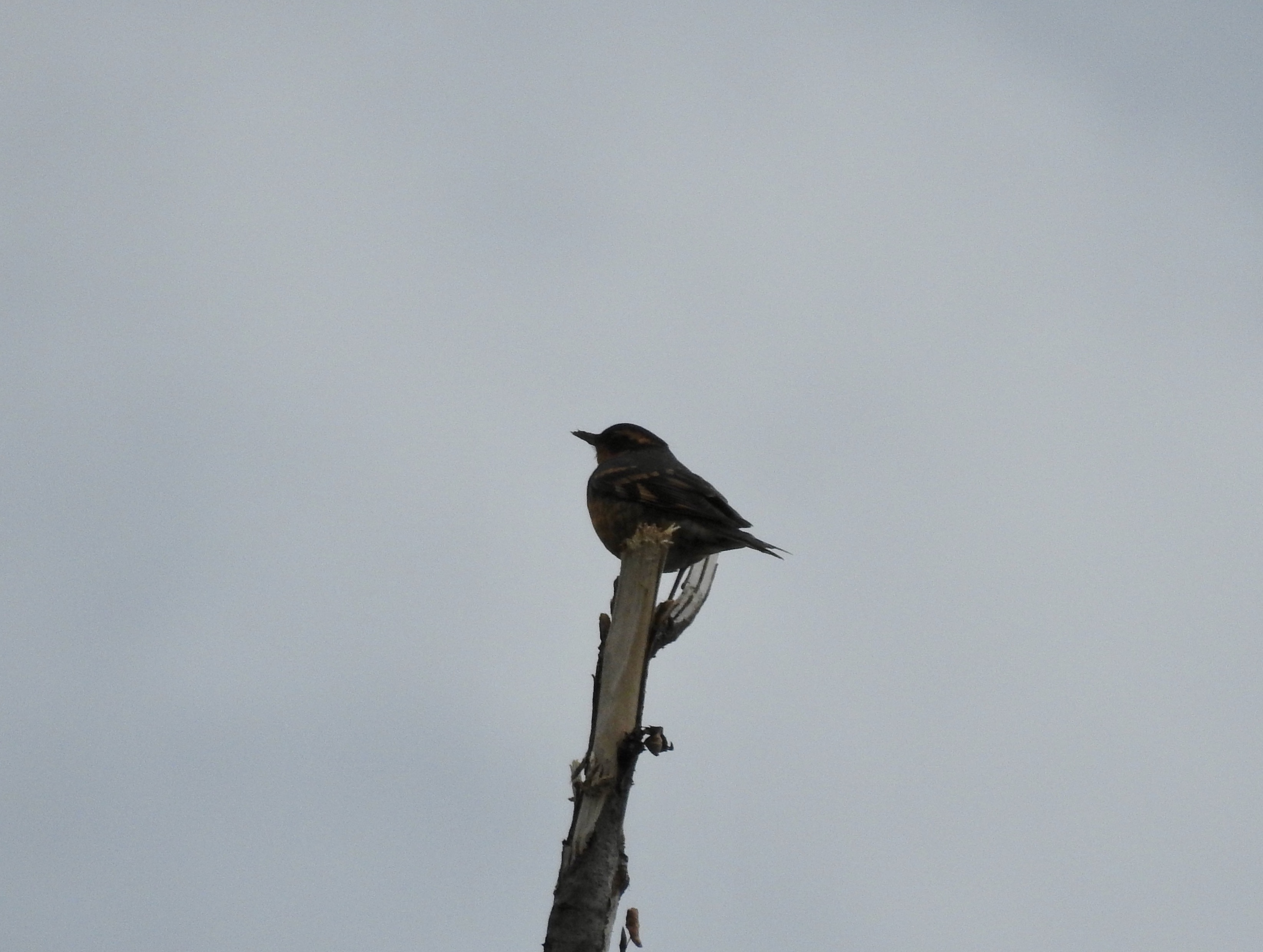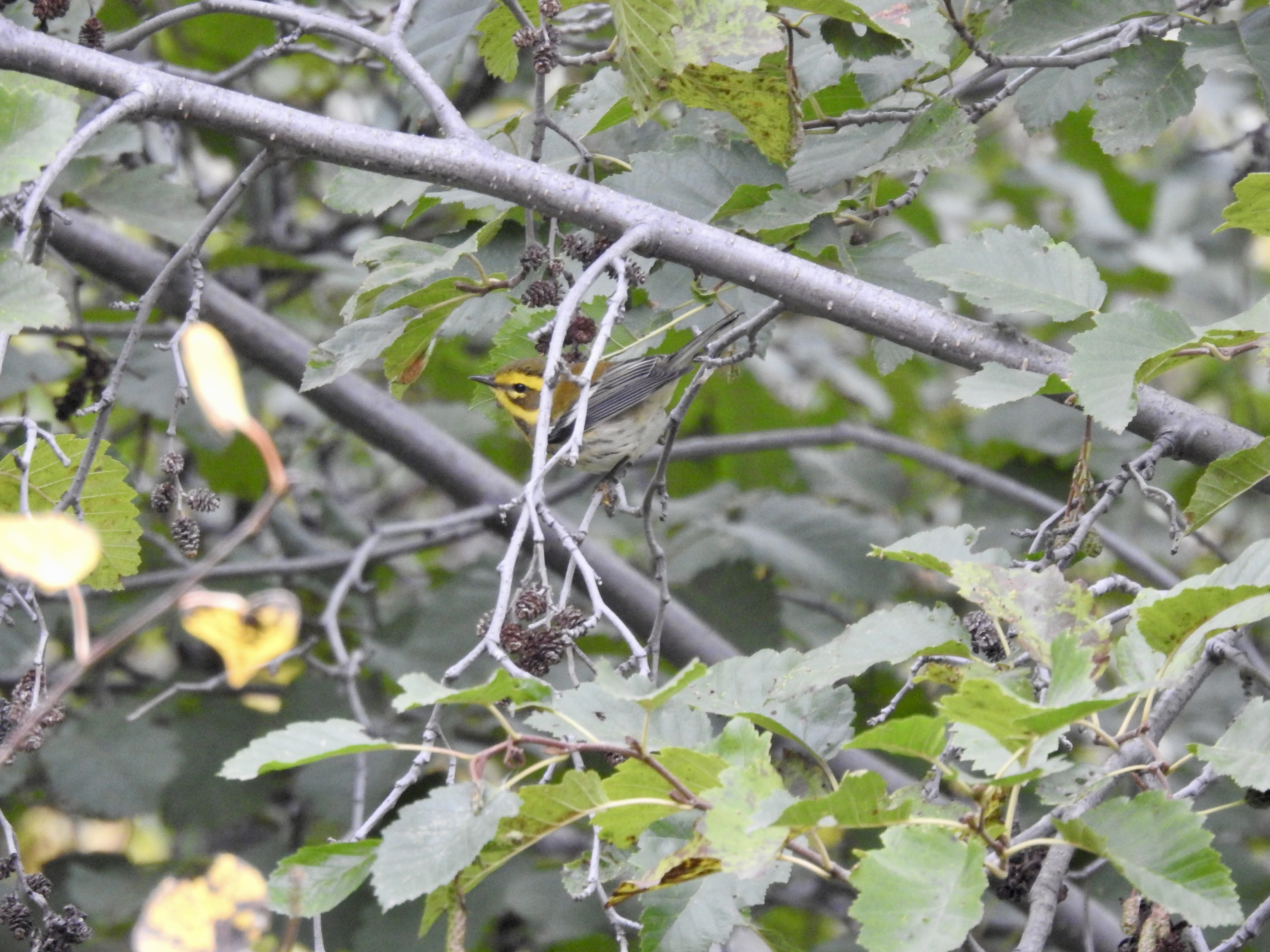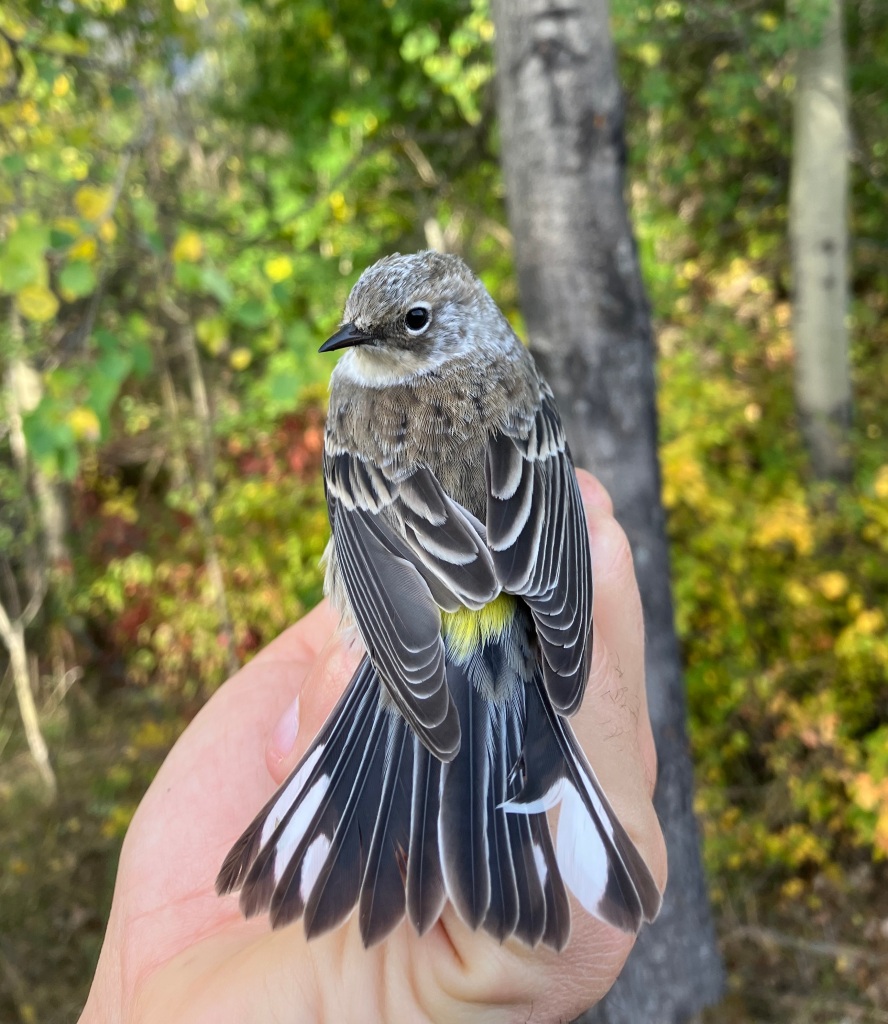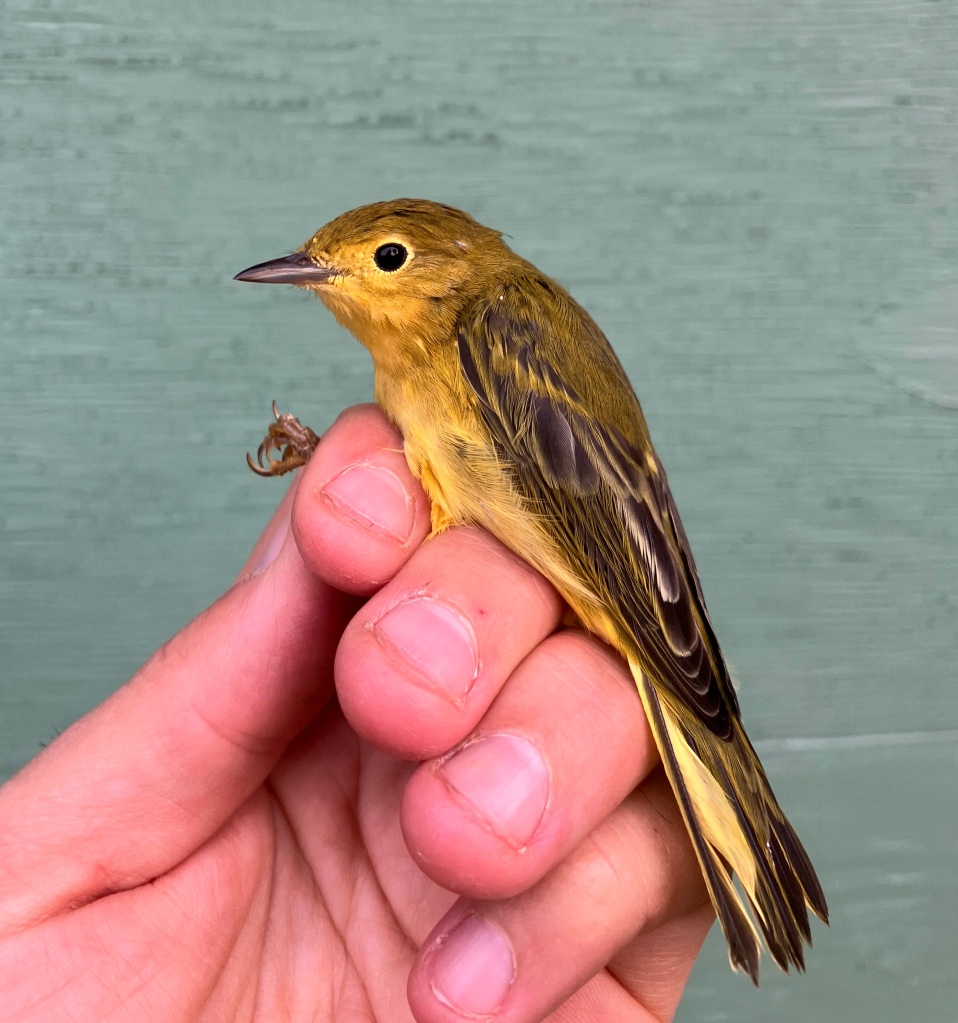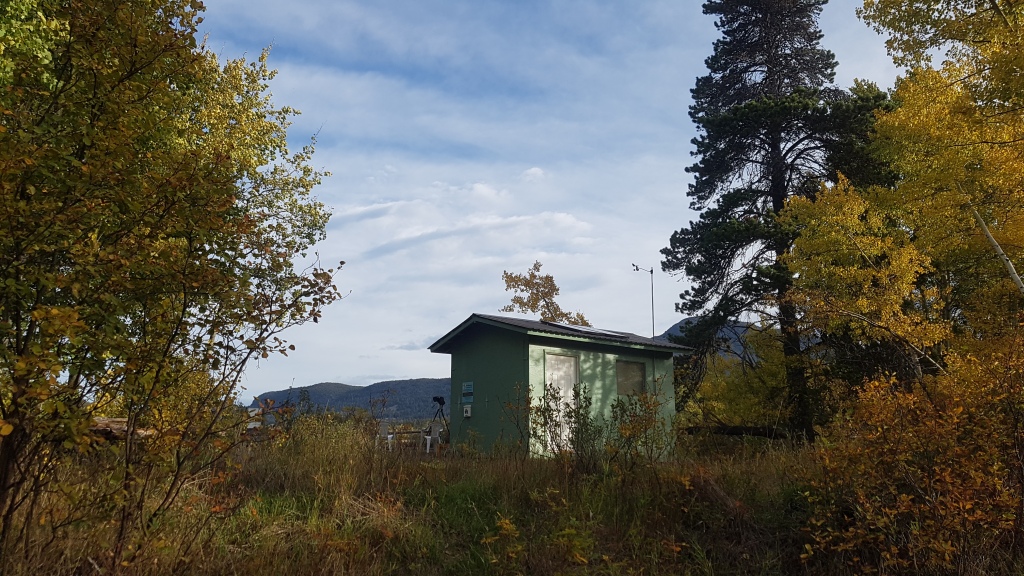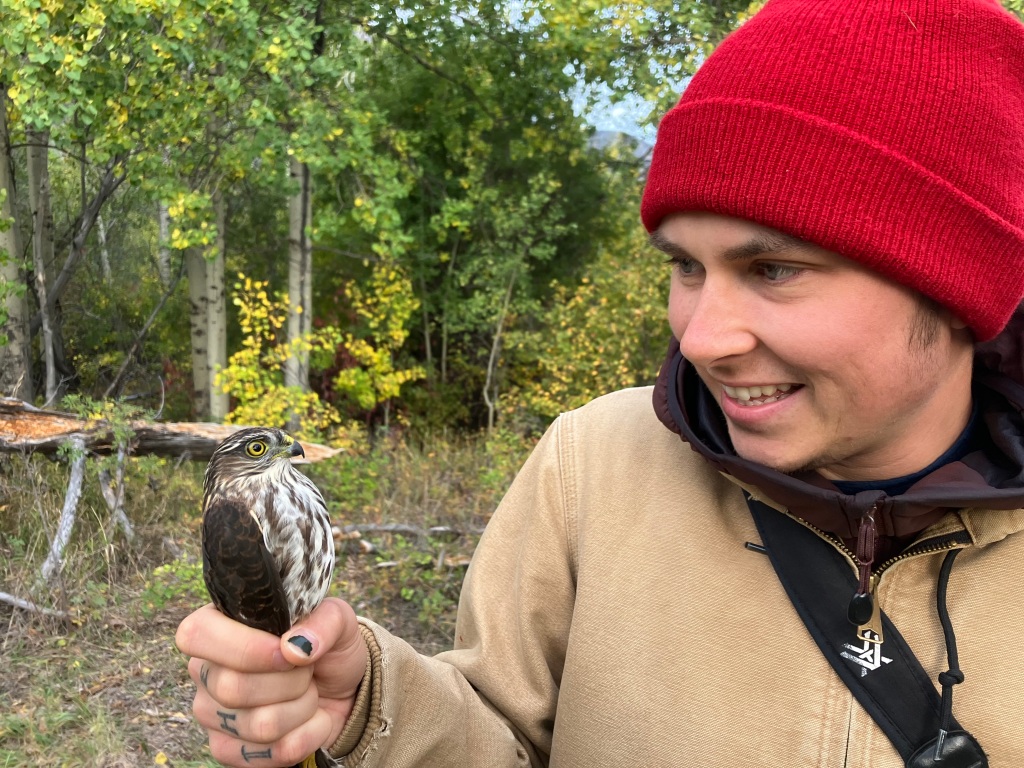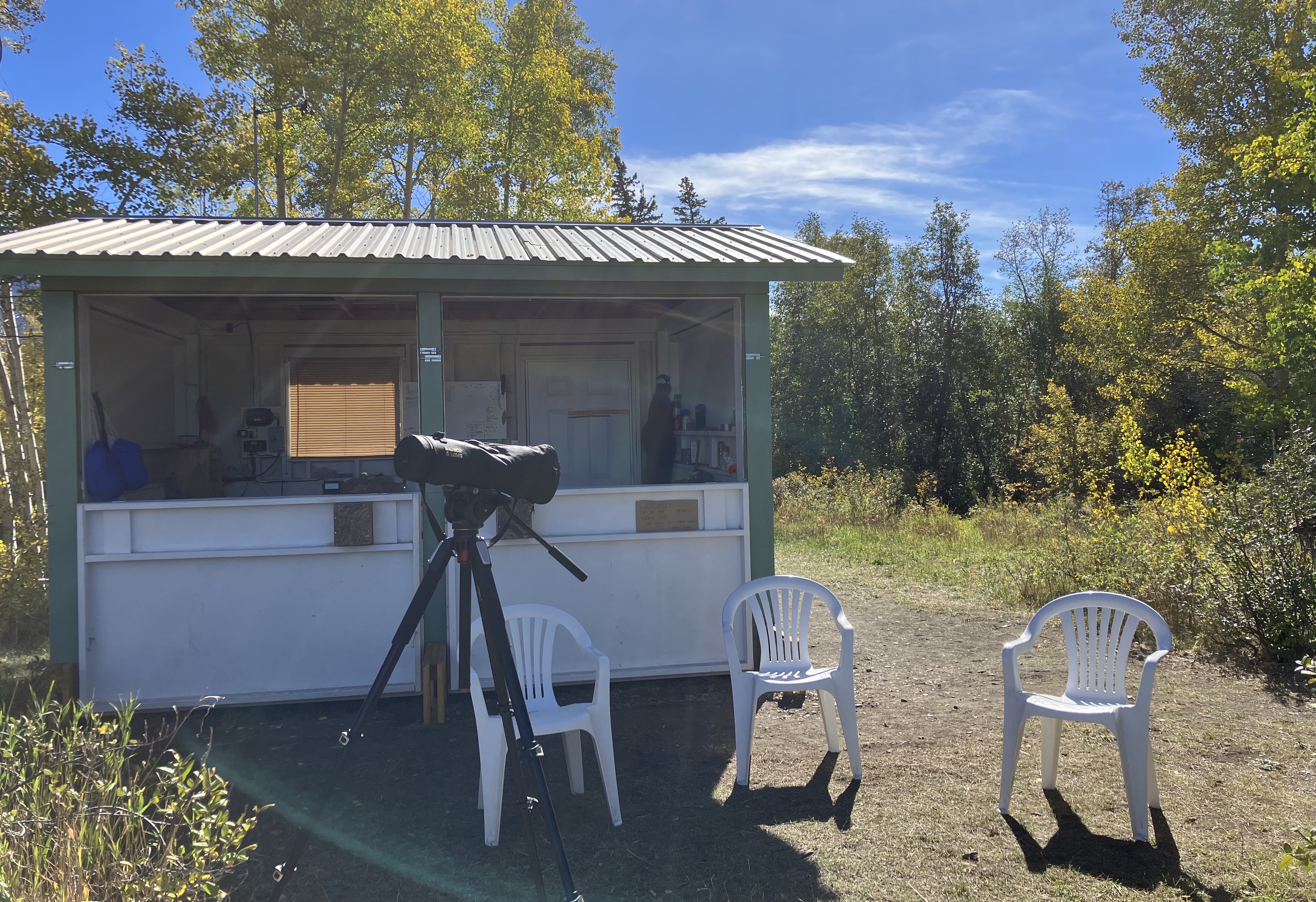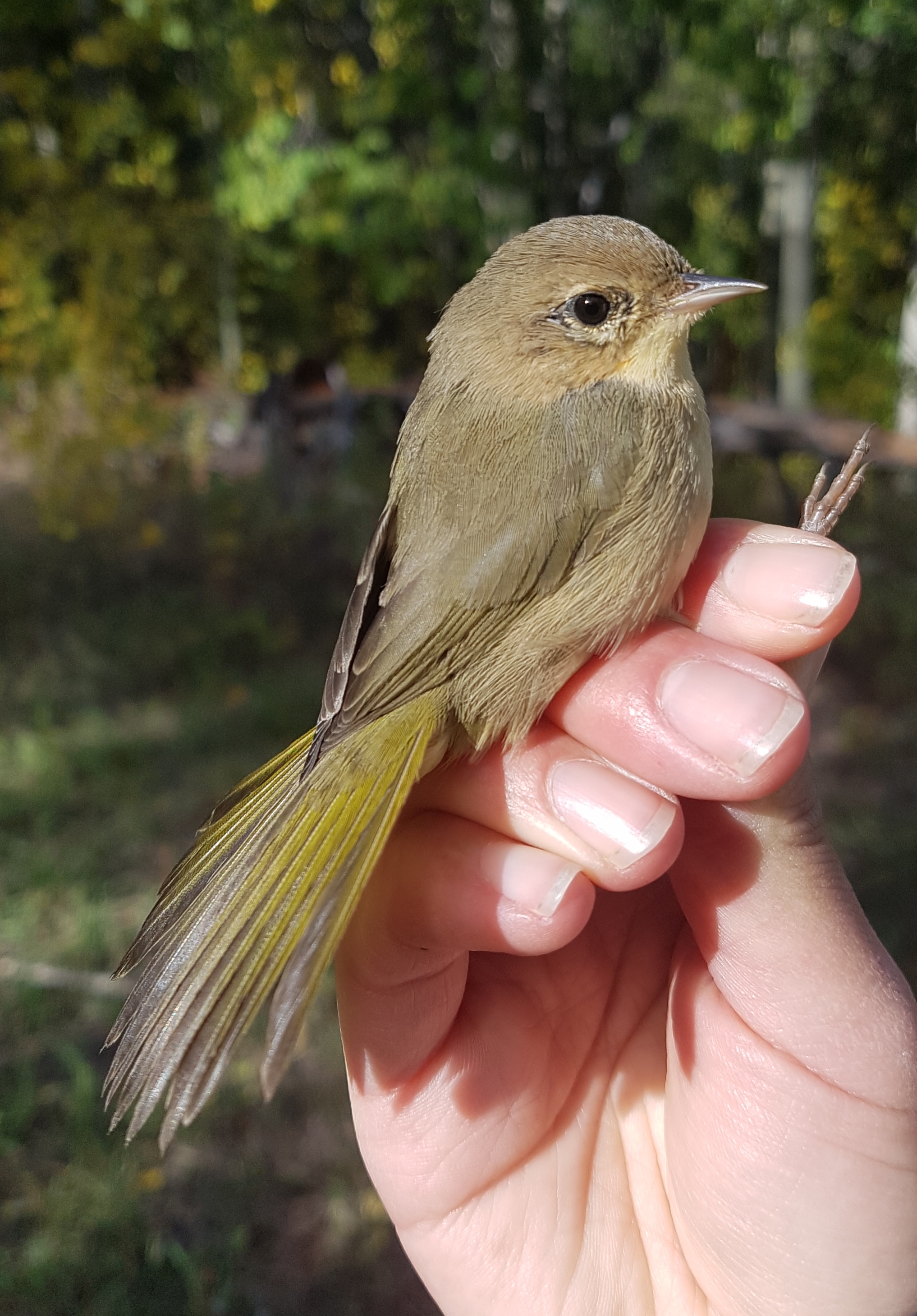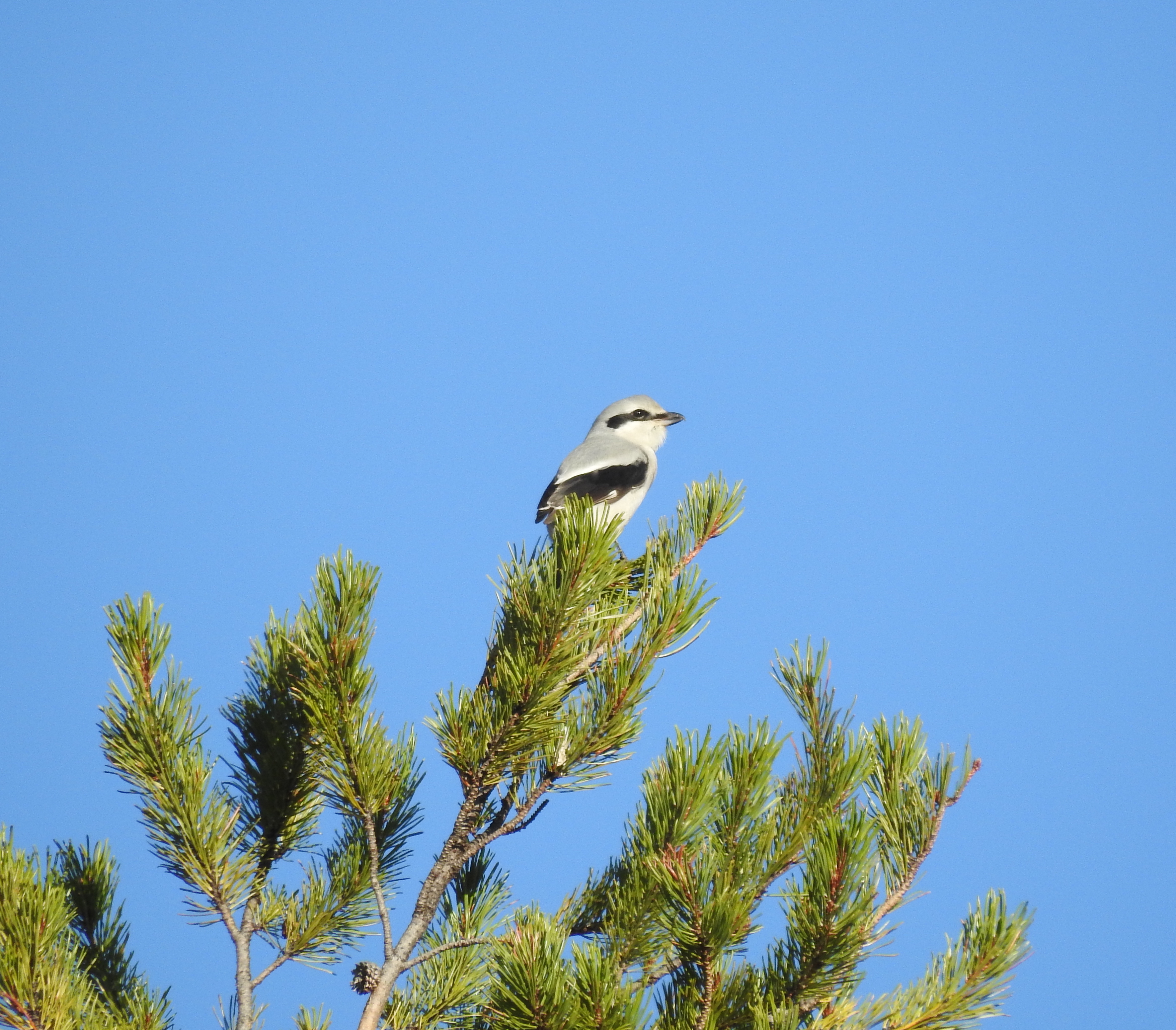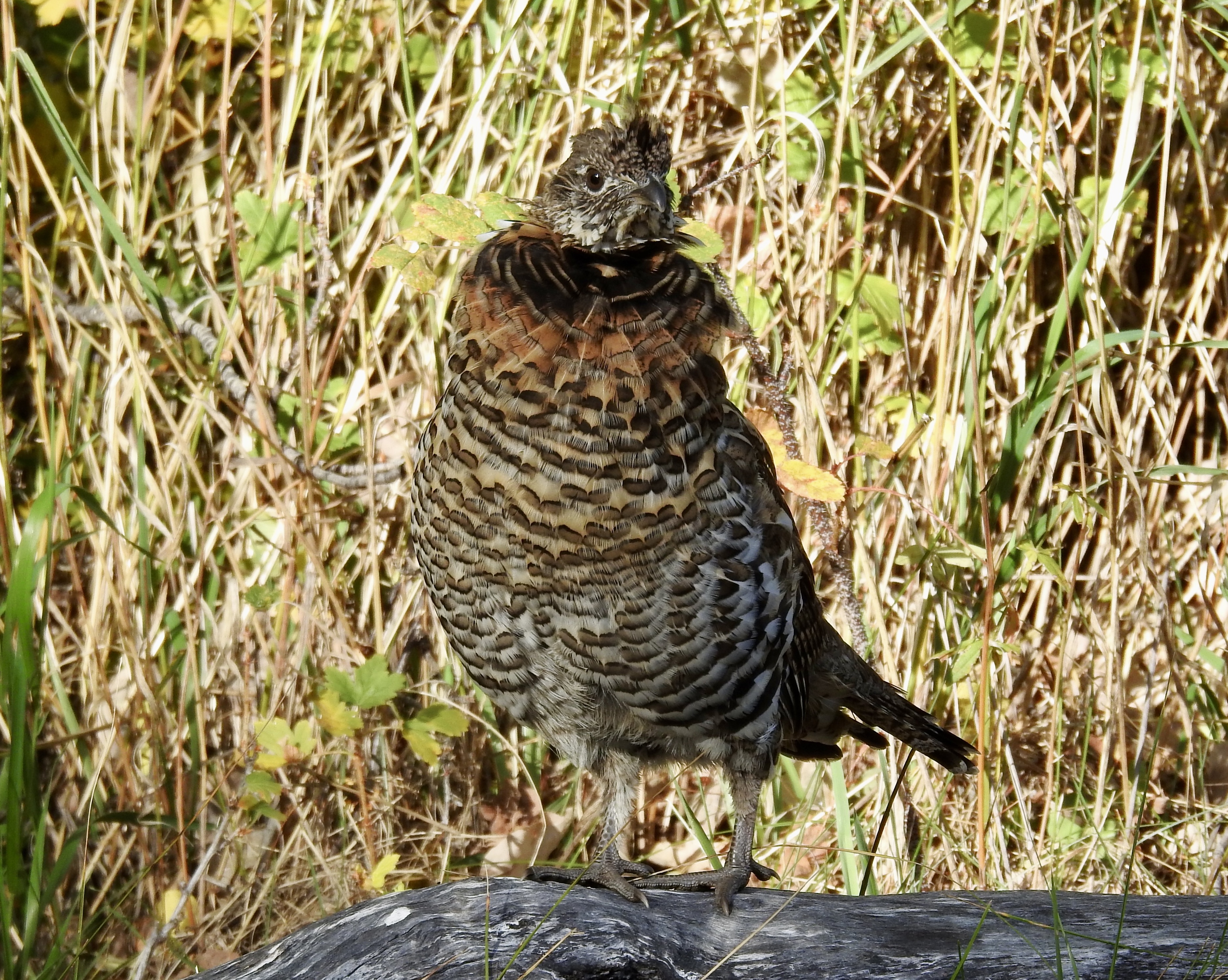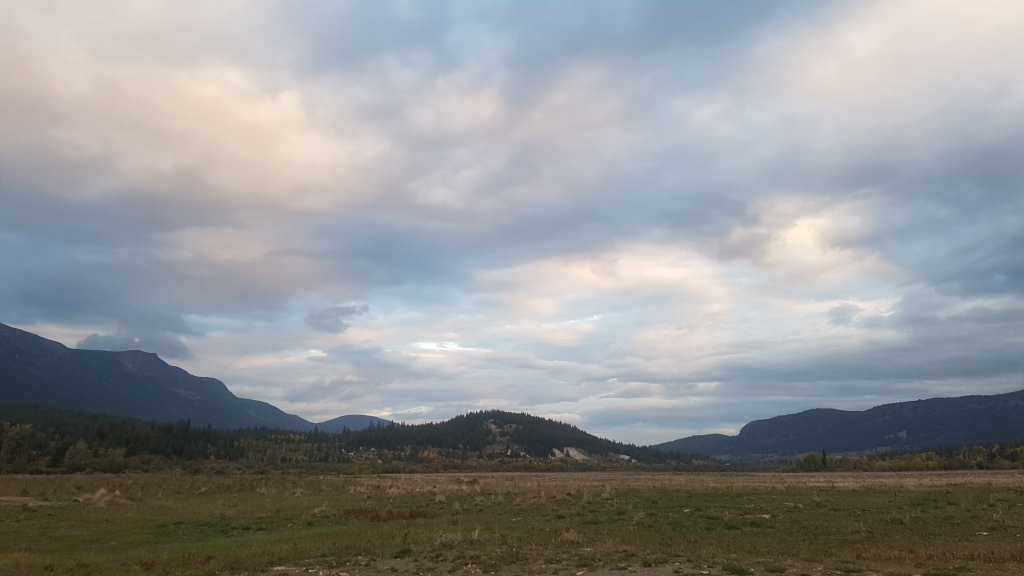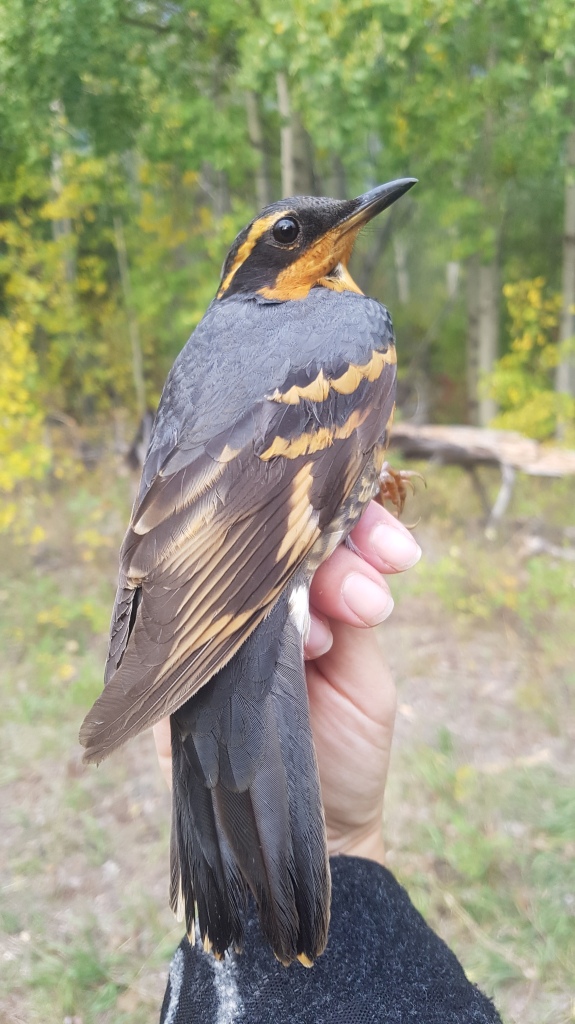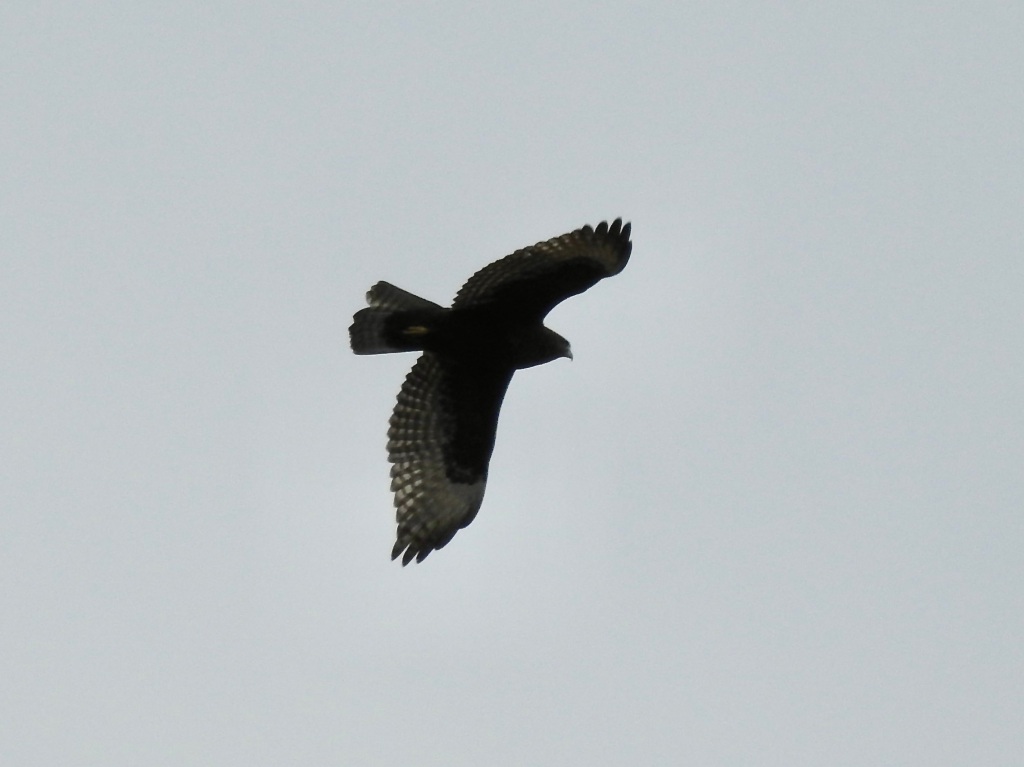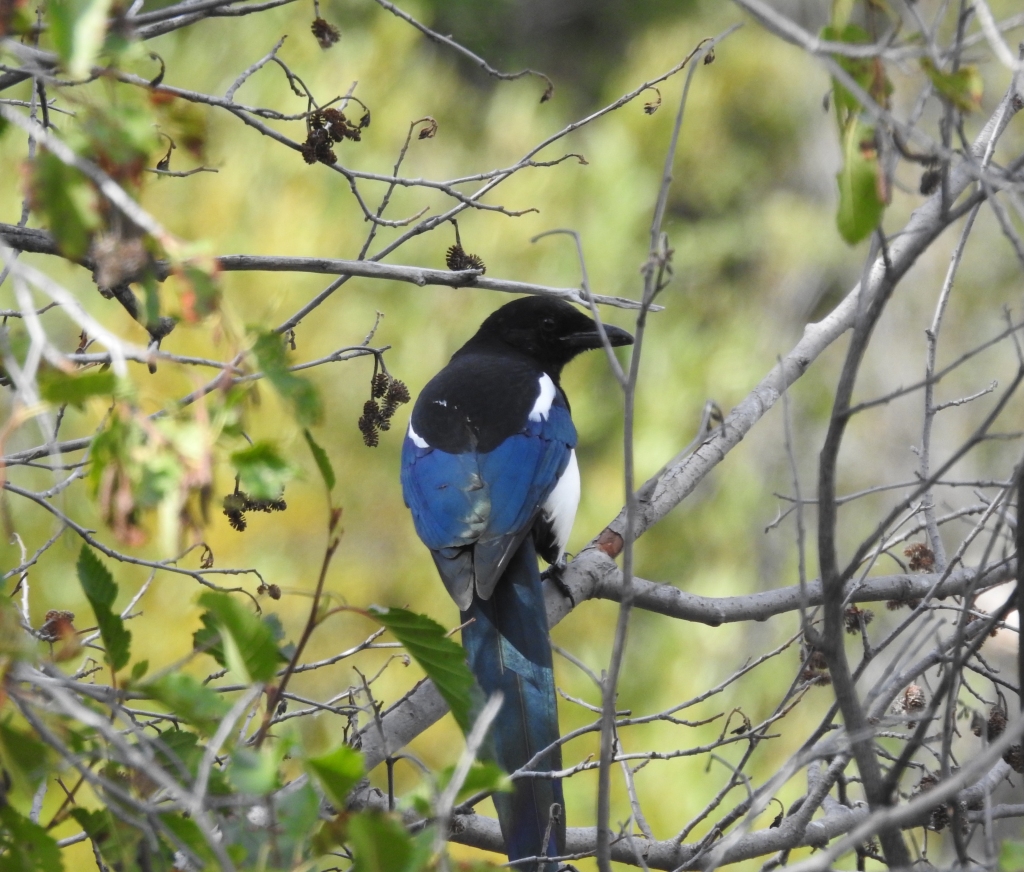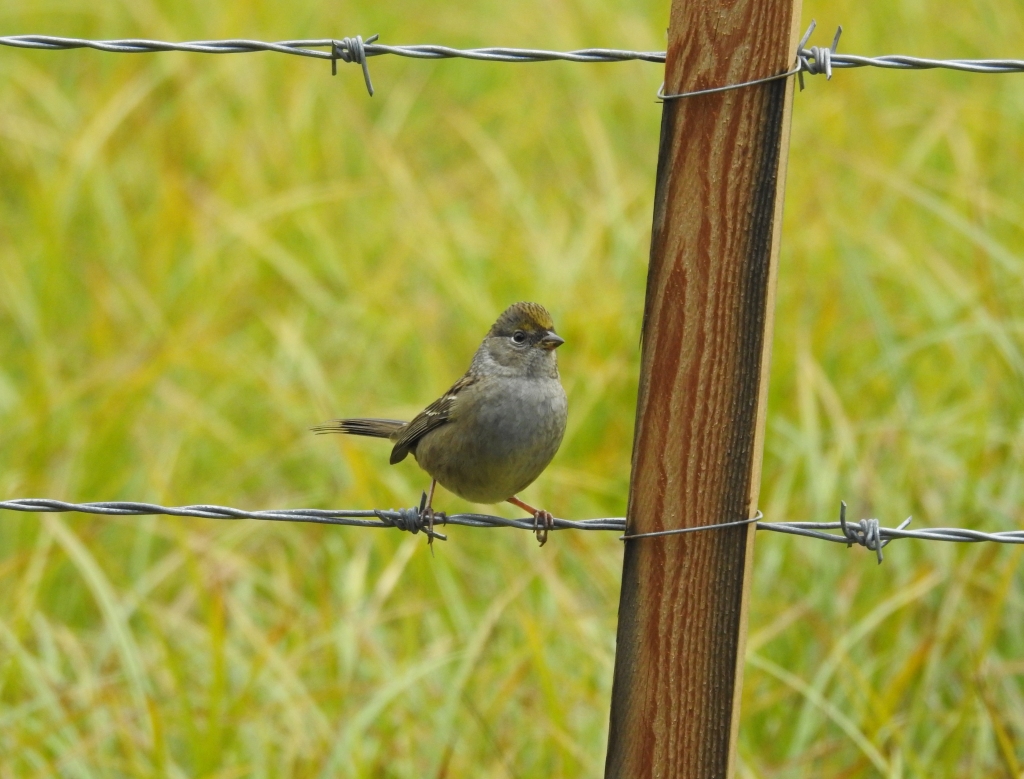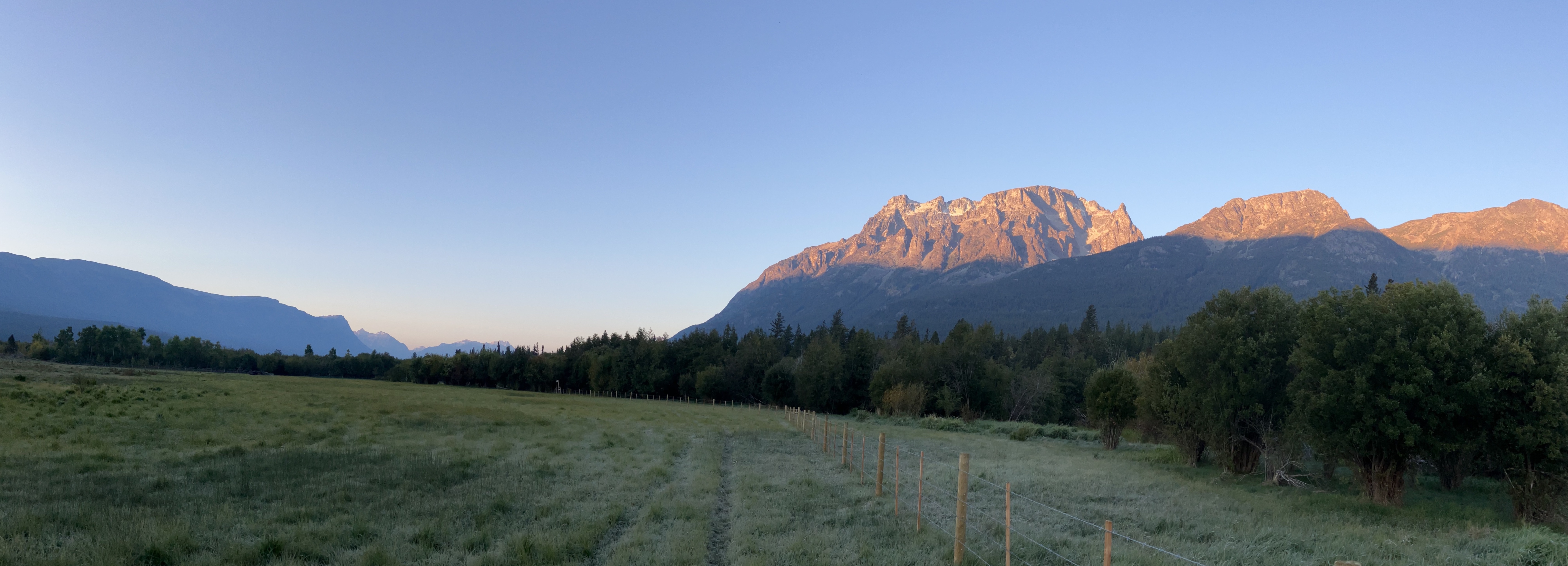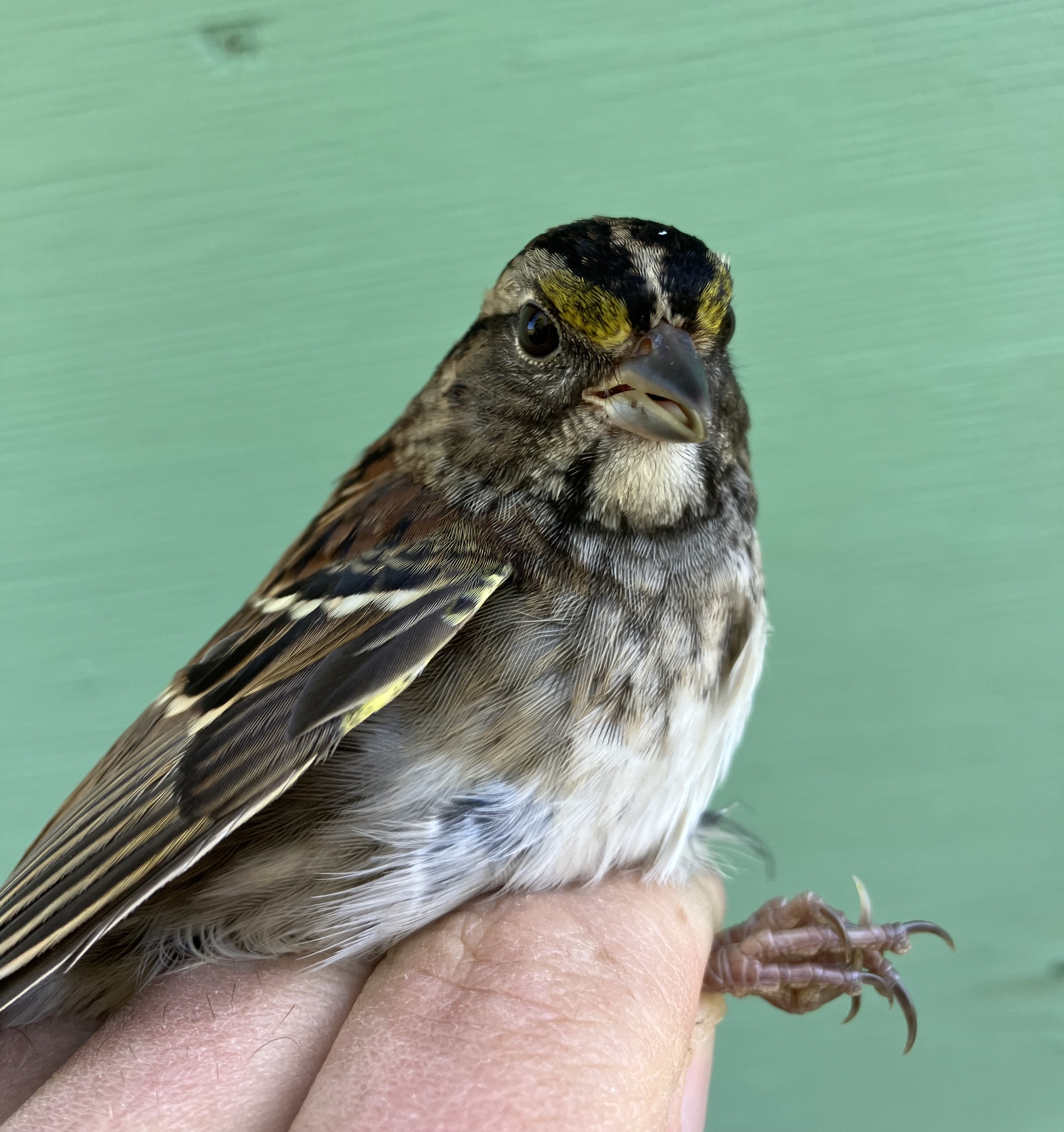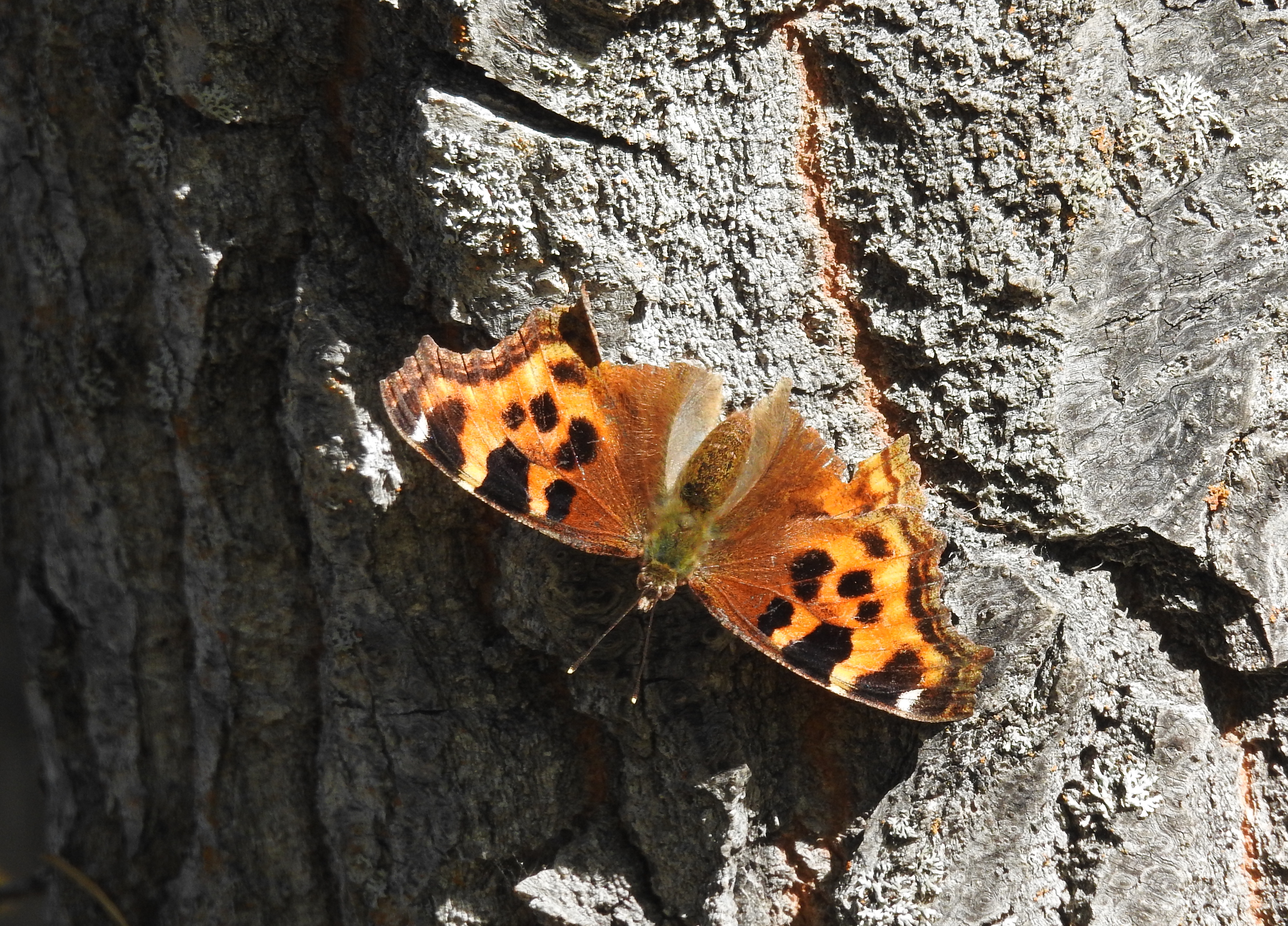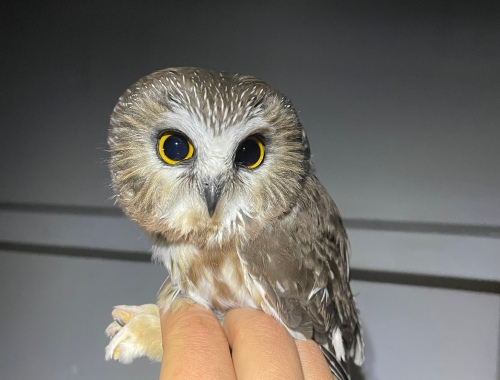
Photographer’s Pose. Photo by Courtney
I would like to begin this my final post of 2023 by acknowledging all of you our readers for following along with us on our journey over the past two and a half months that has marked the 17th season of migration and Northern Saw-whet Owl monitoring at the TLBO. I also would like to express my deepest gratitude for all of you who have contributed in many differing ways to the success of yet another season up here in the beautiful Tatlayoko Valley. To each of our volunteers who gave of their time, energy, and enthusiasm to help us execute both the songbird and owl extension into October, many thanks to you as well. It is always bittersweet to say goodbye to this place and begin my late migration south and east down to my own abode on the cliffs overlooking Kootenay Lake.
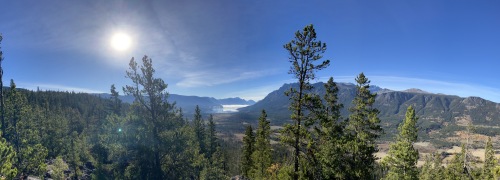
The view looking south towards the lake from our MOTUS Tower on Skinner Ridge
Back in July when a friend of mine up here contacted me asking if she could borrow our live trap as she had a bigger than usual mouse problem in her house, I should have clued in that it would be a good year for Saw-whet Owl reproduction. Alas, it wasn’t until our tally of indoor captures at the field station started to take up an alarming amount of space on the white board that it occurred to me that despite this only being two years after our last big year (2021) this could be an even bigger one. For those of you who are new to the blog, to the best of our knowledge Northern Saw-whet Owl’s favoured prey items like most other owls are rodents and as such their population trends mirror that of their prey species which is thought to peak every four years. As a quick aside we collaborated with Dr. Laura Grieneisen at the University of British Columbia Okanagan this season in a pilot study where we collected 50 fecal samples with the aim of better understanding the microbiome of these mysterious little owls. Who knows, perhaps by this time next year we will have new information on what unknown delicacies these lovely owls feast upon in the darkness of night.
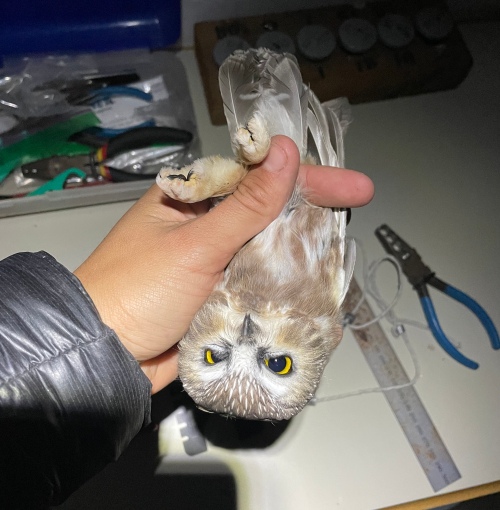
Ready for a band in the “Reverse Grip”. Photo by Courtney
Based on our limited scope this four-year population boom appears to be a little more fluid as our first “big” season was in 2017 (59 owls banded) but then only two years later in 2019 (62 owls banded) we broke that record. The following year was more on trend as we would band only 22 owls with 2021 showing the spike which we had all expected albeit somewhat lower with 54 owls banded. Incidentally, it was that season when we embarked on our first attempt at our October extension to our owl banding program as we had always suspected that we were missing the peak of owl migration in October. Those two weeks proved to be very fruitful as despite exceptionally foul weather we would band an impressive 79 owls in just six nights for a season total of 133. The next September (2022) would surprise us as we would go on to band 56 owls for our third highest total ever albeit with our largest effort ever as these were spread over 14 nights. October that year proved unseasonably warm and calm as Sachiko would get out on 14 of the 15 nights banding 42 owls for a season total of 98.
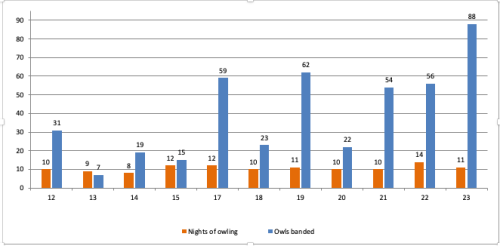
Figure 1. September Owl banding totals by year
As September arrived, I prepared myself for what I expected to be another “slow” season despite the fact that I couldn’t walk two paces without nearly stepping on a live or dead mouse. Despite the mercurial nature of the weather this past September, we would surprise ourselves by banding a record breaking 88 owls in just 11 nights which is an average of eight per night, five more than our long-term average of three. I had high hopes for October and even with the poor weather it didn’t disappoint. We were able to get out on eight nights (an improvement on 2021) and banded one better than the previous month with 89 (average of 11 per night) for a season total of, are you ready for it, 177!
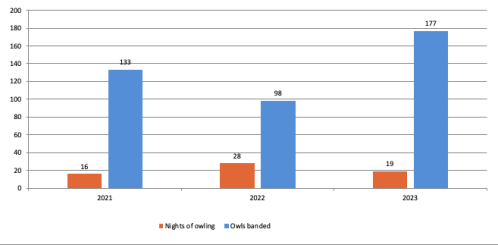
Figure 2. Owls banded by season (September – October 15)
To shift to age ratios for a moment, in a large breeding season we would expect to capture a far larger percentage of young (hatch-years) versus adults. An example of this is in our first two big seasons, namely 2017 and 2019 our ratio was 92% hatch-years to 8% adults and 95% hatch-years to 5% adults respectively. This is quite a stark contrast compared to our last three years of data which include the addition of the owl extension into October where the ratios are quite similar between 2021 (84% hatch-year: 14% adult), 2022 (89% hatch-year: 11% adult), and 2023 (89% hatch-year: 11% adult). You probably noticed that though the volume was nearly double that of 2022 this season the ratios were exactly the same. One possibility is that due to the warm weather in 2022 we actually missed the peak movement of these owls or they were less in a hurry to start moving. The other factor is that with the extension into October we are likely to capture more adults as if owls are anything like songbirds the adults tend to begin their migration later than their young. Only by continuing to run our October owling extension can we collect more data to better answer these questions.
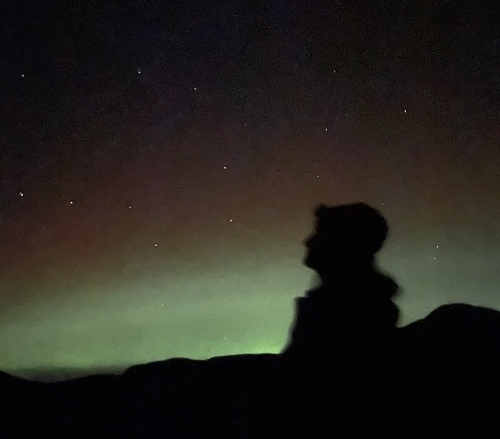
Mae basking in the glow of the northern lights. Photo by Courtney
Switching to the songbird front, it has been a fantastic season for visual migration and species diversity as in the two and a half months that we have been here we have recorded 153 species, four of which are new to the hotspot’s list! Since my last post I added one more species, American Coot which is historically sparse at the TLBO as this is only our fourth record. For those Swan fans out there, the Trumpeter Swan was still present when Courtney, Mae, and Keith were at the lagoon on the 14th.
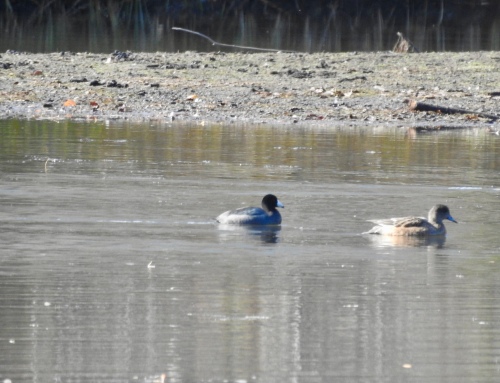
The American Coot followed close behind an American Wigeon in the lagoon
Since my last post I have no new species to recount on the banding front. The final tally for the month of whimsical songbird banding this October was 28 new birds banded comprised of 11 species with four recaptures which were all Black-capped Chickadees. I do have one last experience to relate for as I was taking down the owl nets amidst the nearly leafless alders late this afternoon, I heard the barking song of a Barred Owl. I can do a passable impression of this particular owl and have been known to duet with them from time to time in March from my deck back home. Needless to say, we sang to each other for a time as I secretly hoped that it would come for a closer inspection which it did deign to do. It was a lovely send off and I was quite content that it was indeed time to pack up the station for another season as very few birds were present along the trail.
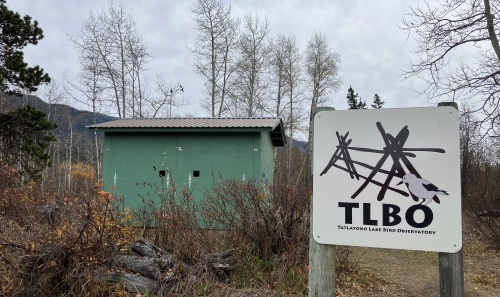
Thank you all again for your attention and devotion to my ramblings as the pleasure is all mine. With any luck we will all meet again here next spring for the Birdathon reports of our team, “The Wandering Tatlers”.
All my recent checklists can be seen at: https://ebird.org/hotspot/L989990?m=&yr=cur&changeDate=
_
| 2023 Nothern Saw-whet Owl Banding Stats (Sept. 3 – Oct. 12) | |
| Banded | 177 |
| Recaptured | 5 |
| # of Owling Nights | 19 |
| Physical Hours of Owling | 59.75 |
| Owls per Hour | 3 |
| Volunteer Hours | 87.25 |
_
| October Non-standard Banding | ||
| Species | Banded | Recaptured |
| White-crowned Sparrow | 8 | |
| Golden-crowned Sparrow | 4 | |
| Ruby-crowned Kinglet | 4 | |
| Varied Thrush | 3 | |
| Fox Sparrow | 2 | |
| Lincoln’s Sparrow | 2 | |
| Wilson’s Snipe | 1 | |
| Yellow-rumped Warbler | 1 | |
| Dark-eyed Junco | 1 | |
| Savannah Sparrow | 1 | |
| Hairy Woodpecker | 1 | |
| Black-capped Chickadee | 4 | |
| Total | 28 | 4 |
